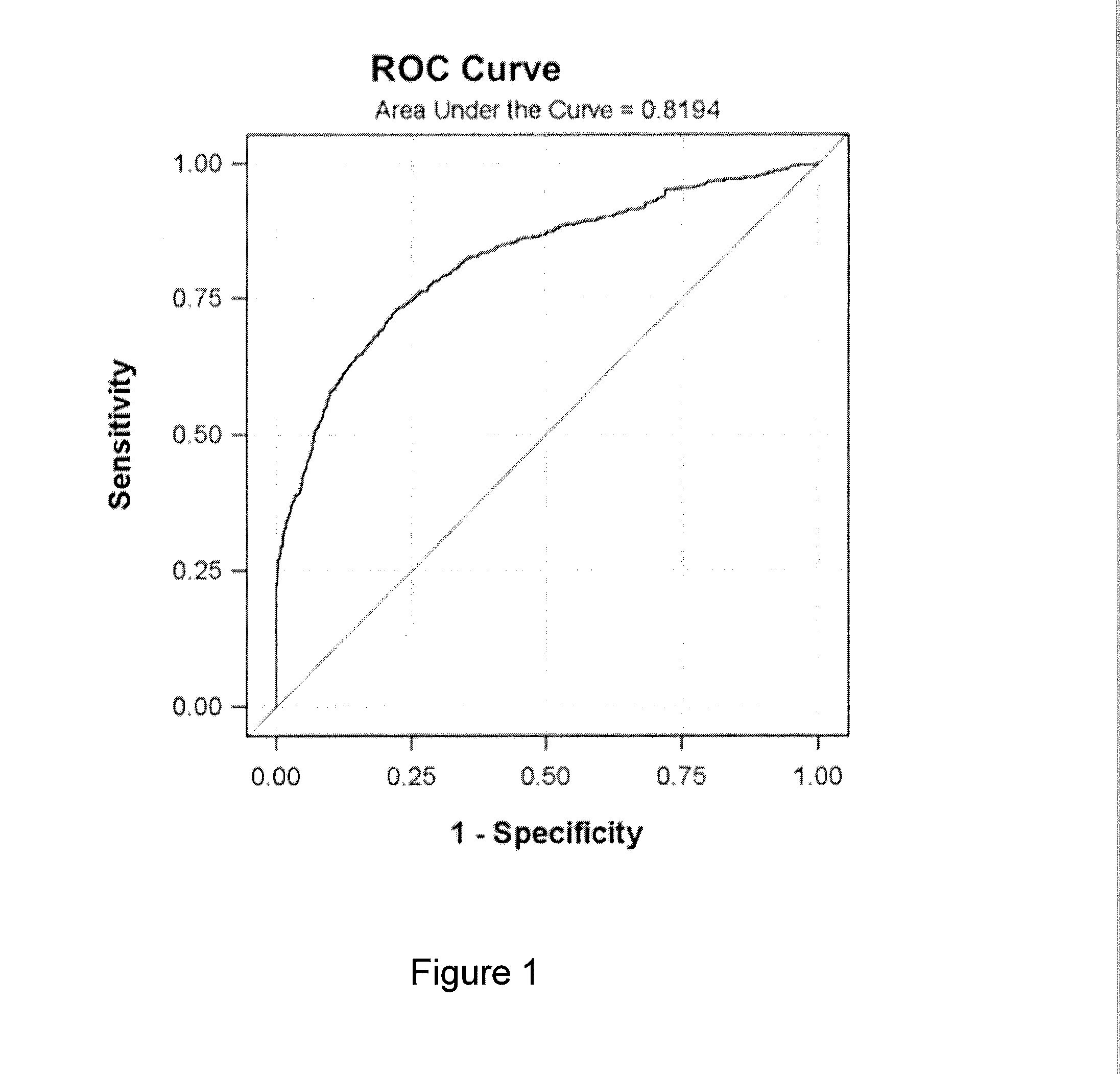Tumor biomarker
- Summary
- Abstract
- Description
- Claims
- Application Information
AI Technical Summary
Benefits of technology
Problems solved by technology
Method used
Image
Examples
example 1
[0050]The clinical performance and the scope of clinical utility of the quantitative detection kit for human plasma heat shock protein 90α (Hsp90α) were evaluated by the following three tests.
[0051]1. To test the sensitivity, specificity, and accuracy of the quantitative detection kit for Hsp90α, concentration of plasma Hsp90α in healthy people, lung cancer patients, patients with non-cancerous lung diseases, and patients with other malignant tumors were detected. Suitable cut-off values were derived from the receiver-operating characteristic (ROC) curves for positive determination.
[0052]2. The concentration of plasma Hsp90α in lung cancer patients was dynamically monitored during the process of treatment, and the relevance between plasma Hsp90α concentration and the condition of patient was tested to evaluate its efficiency for efficacy monitoring.
[0053]3. Detection results of carcino-embryonic antigen (CEA) and cytokeratin 19 fragment antigen 21-1 (CYFRA21-1) were ...
example 2
2. Summary of the Results
[0081]2.1 Non-Dynamic Monitoring Group 2036 cases (lung cancer group: 1,046 cases, other malignant tumors group: 37 cases, non-cancerous lung diseases group: 344 cases, lung benign tumors group: 17 cases, healthy people group: 592 cases) were recruited in non-dynamic monitoring group. All 2036 cases met the recruitment standard. No subject was eliminated. For details, see Table 8.1.1.1 and Table 8.1.1.2. Case distribution from various centers was summarized in Table 8.1.1.3.
[0082]The Evaluation of Diagnostic Performance of Hsp90α
[0083]To evaluate the performance of Hsp90α in the diagnosis of lung cancer and non-cancerous diseases, patients suffering from other types of malignant tumors were excluded. 1999 cases were recruited in the study, among which 1046 cases were lung cancer patients and 953 cases were non-cancerous disease patients. The demographic information of the two groups and summary of the diagnostic results of lung cancer patients were shown in ...
example 3
3 Statistical Results
[0101]3.1 Non-Dynamic Monitoring Group
TABLE 8.1.1.1Cases recruited and dataset for analysisCasesResults (Percentage)All cases2036 (100%)Excluded cases0 (0.00%)Valid cases2036 (100%)Lung cancer patients1046 (51.38%)Other malignant cancer patients37 (1.82%)Non-cancerous lung disease patients344 (16.90%)Benign lung tumor patients17 (0.83%)Healthy people592 (29.08%)
TABLE 8.1.1.2Case distribution in non-dynamic monitoring groupClinical Cases Valid Centersrecruitedcases1141141285785731371374151551181187606084804809228228Sum20362036
[0102]3.1.1 Lung Cancer Group and Non-Cancerous Group
[0103]3.1.1.1 Evaluation of the Diagnostic Performance of Hsp90α
[0104]3.1.1.1.1 Characteristics of Subjects
TABLE 8.1.1.1.1.1Demographic information of all subjectsIndexLung cancer Non-cancerous Age (years)groupgroupTotalN (Missing)1043 (3)869 (84)1912 (87)Mean (SD)59.76(10.79)47.74 (17.93)54.30(15.67)Min, Max24,100109810,100Md (Q3-Q1) 60.00(13.00)46.00(24.00)55.00(22.00)SexMale711(68.23%)4...
PUM
 Login to View More
Login to View More Abstract
Description
Claims
Application Information
 Login to View More
Login to View More - R&D
- Intellectual Property
- Life Sciences
- Materials
- Tech Scout
- Unparalleled Data Quality
- Higher Quality Content
- 60% Fewer Hallucinations
Browse by: Latest US Patents, China's latest patents, Technical Efficacy Thesaurus, Application Domain, Technology Topic, Popular Technical Reports.
© 2025 PatSnap. All rights reserved.Legal|Privacy policy|Modern Slavery Act Transparency Statement|Sitemap|About US| Contact US: help@patsnap.com



